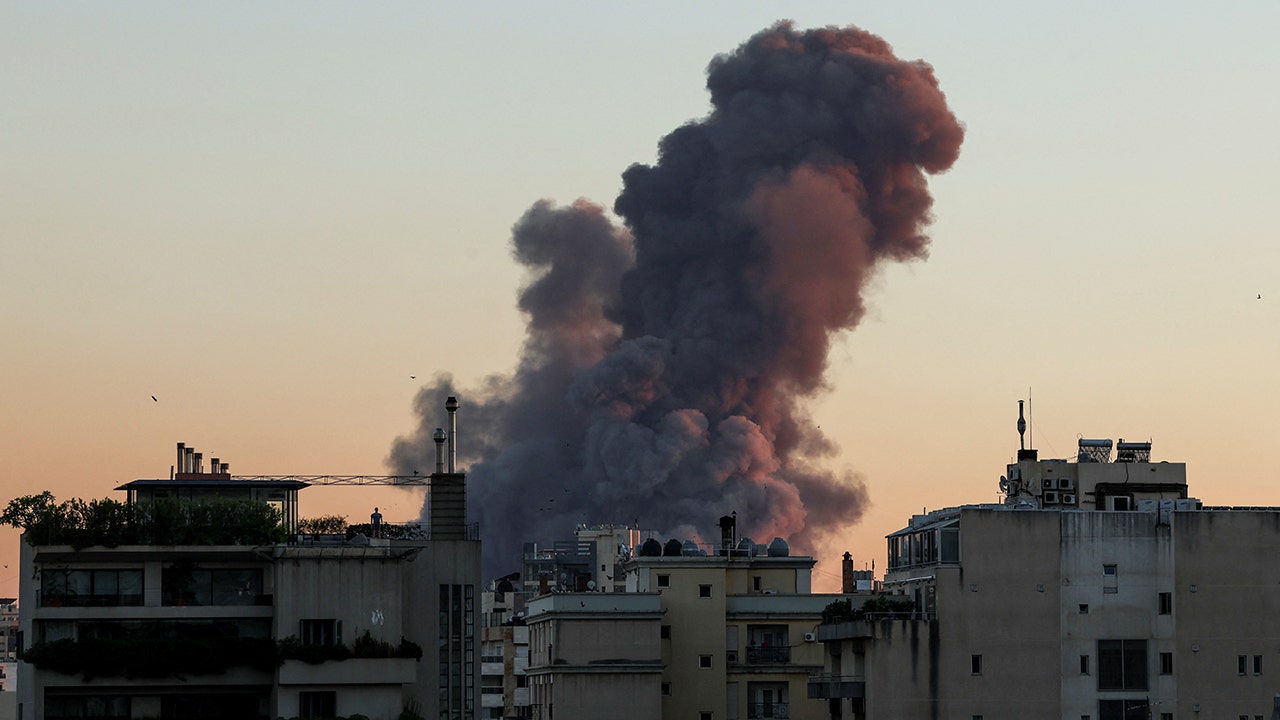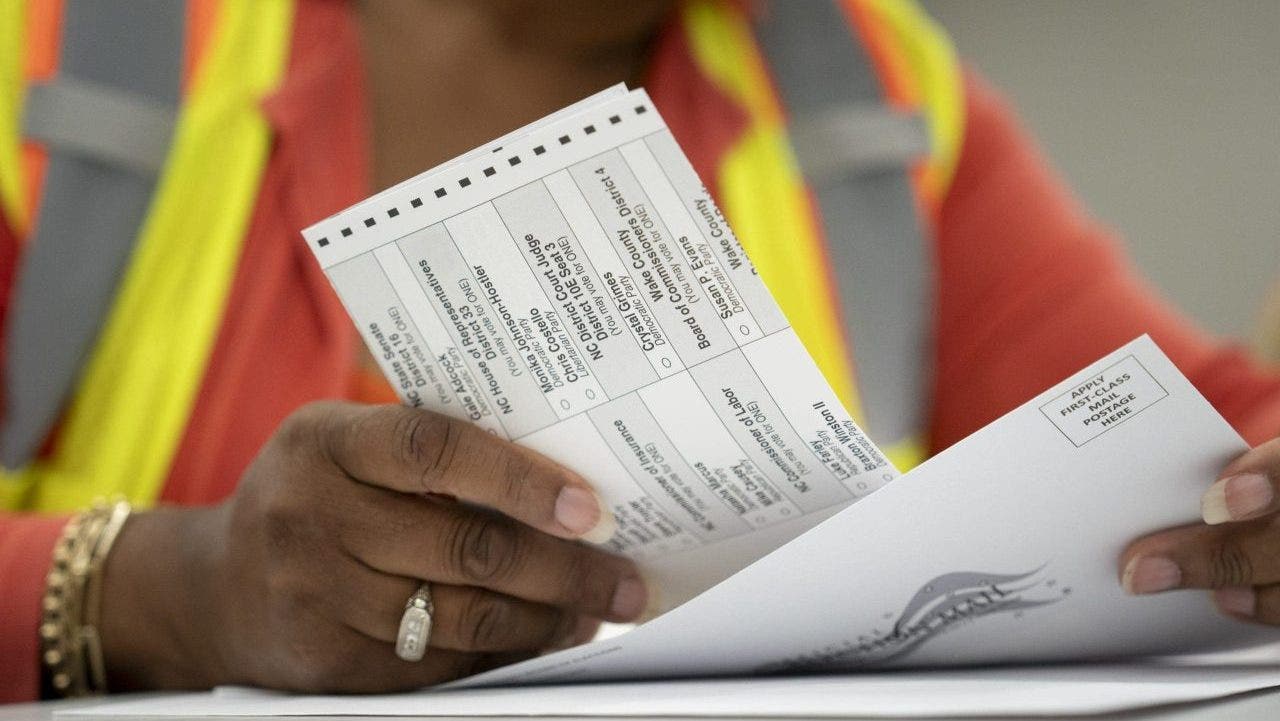Florida
Tom Herman stocks up on Florida recruits in latest FAU football signing class

Florida Atlantic football head coach Tom Herman and his staff didn’t need to steer far from Interstate 95 and the Florida Turnpike to ink Wednesday’s signing class.
Fourteen of the Owls’ 15 high school signees hail from the Sunshine State, the lone exception Keon Rohe, a 6-foot-6, 250-pound offensive line prospect from Germany.
“If they’re from the United States, they’re from the state of Florida,” Herman said of his freshmen signees. “There always will be [an emphasis on homegrown players]. There are so many talented high school football players that are really well coached within 100 miles of our campus.
“That’s a real plus for our program, because we’re not just going to be able to go buy all these transfers.”
FAU also welcomed two signees from the junior college ranks.
Notable state signees included Palm Beach Gardens defensive back Mike Wright III, Chaminade-Madonna safety Curtis Janvier and North Florida Christian athlete Leon Washington Jr., the son of former NFL All-Pro and Florida State running back Leon Washington.
The Owls are in their second offseason under Herman. The former Houston and Texas Longhorns head coach posted a 4-8 record this fall in his first regular season.
State football: FAU’s Tom Herman shocked by Florida high school coaches forced to leave because of low pay
Who are potential instant impact players in FAU’s recruiting class?
Herman said he currently expects seven members of the signing class to be on-campus for spring football, an important step in acclimating the young players to college football as quickly as possible.
Outside of the quarterback and offensive line positions, Herman said his coaching staff targets high school prospects with the expectation they can contribute quickly and won’t need to redshirt.
“In this portal-era age, it’s harder and harder for true freshmen to play,” Herman said. “… We do need more freshmen to step up and contribute. At the end of the day, we don’t recruit guys to be backups.”
“This was the class that we really got to dive in and build relationships with. With the way college football is trending, you really build your culture and foundation with your freshmen. … It was imperative for us to dive in and learn about the make-up and DNA of this freshmen class.”
What does FAU football still need to improve?
Herman expects a “second wave” of recruits from the transfer portal in January and February as the Owls target experienced options to supplement the secondary and running back room.
The Owls’ backfield is particularly in need of reinforcements. Last season’s leading rushers were senior Larry McCammon III (710 yards, 5 touchdowns) and graduate student Kobe Lewis (451 yards, 3 touchdowns) with quarterbacks Michael Johnson Jr. and Daniel Richardson the next most productive.
Redshirt junior Zuberi Mobley (65 rushing yards) is the most productive returner in an inexperienced running back room of mostly underclassmen.
Does Tom Herman have his quarterback for 2024?
The Owls notably did not sign a quarterback prospect Wednesday though Herman wasn’t shy to admit the Owls will be watching the transfer market for the position.
FAU entered last season with a transfer at starting quarterback as Casey Thompson, who played under Herman at Texas before transferring to Nebraska upon his coach’s firing, reunited with Herman in Boca Raton.
Thompson tore his ACL in a September loss at Clemson. The Owls started Daniel Richardson of Miami Carol City for much of the rest of the season.
“I certainly think we could have that [starting] guy on campus right now but I think in the best interest and health of our roster we need to go get a guy with some experience to compete,” Herman said.
View all of FAU football’s December signings below:
- Kyle Boylston, S, Trinity Christian
- Braden Cunningham, OL, Fleming Island
- Cameron Goggins, DB, Georgia Military College
- Mauricio Hinds, OT, Clearwater International Academy
- Curtis Janvier, S, Chaminade-Madonna
- Jarvis Johnson, LB, Westminster Christian
- Lawrence Johnson, DB, Palmetto
- Char’quez Lee, LB, Palmetto
- Gavench Marcelin, Edge, Belen Jesuit
- Jaheim Miller, DB, Norland
- Ethan Proffitt, OL, Bishop Kenny
- Keon Rohe, OL, Germany
- Kaden Shields-Dutton, RB, Edgewater
- Leon Washington Jr., ATH, North Florida Christian
- Loren Ward, DL, Cocoa
- Mike Wright III, DB, Palm Beach Gardens
- Joseph Young, WR, Coffeyville C.C.
Eric J. Wallace is deputy sports editor for The Palm Beach Post. He can be reached at ejwallace@gannett.com.

Florida
Hurricane Helene Moving Over Georgia Toward Tennessee Valley—Here’s What To Know

Topline
Hurricane Helene made landfall in Florida’s Big Bend as a Category 4 storm late Thursday, knocking out power in over two million homes and businesses and causing at least six deaths in Florida and Georgia before barreling toward North Carolina and the Tennessee Valley Friday.
A boat washed ashore as storm surge from Hurricane Helene affects Gulfport, Florida Sept. 26, 2024.
Key Facts
The center of Helene, which has been downgraded to a tropical storm since making landfall, was located about 30 miles northeast of Athens, Georgia, as of 7 a.m. EDT Friday, the National Hurricane Center said, with maximum sustained winds of 60 mph.
Helene is expected to bring “damaging gusty winds and life-threatening flooding” to the Southeast and southern Appalachian mountains, with total rain accumulation up to 20 inches in isolated areas.
Tornadoes are possible Friday through parts of eastern Georgia, the Carolinas and southern Virginia, and tropical storm conditions are expected to persist along the Georgia and South Carolina coasts.
Mandatory evacuations have been ordered in Asheville and McDowell counties in North Carolina as rivers and reservoirs are expected to swell from heavy rainfall, and multiple schools in Kentucky and Indiana will be closed Friday as winds and heavy rain pelt the region.
A storm surge warning remains in effect for parts of Florida, including Tampa Bay, and from Indian Pass to Apalachicola in the Panhandle.
Get Forbes Breaking News Text Alerts: We’re launching text message alerts so you’ll always know the biggest stories shaping the day’s headlines. Text “Alerts” to (201) 335-0739 or sign up here.
Key Background
Hurricane Helene first made landfall at around 11:10 p.m. EDT near the city of Perry in Florida’s Big Bend area. The storm moved through Florida and Georgia so far, leaving at least six people dead, ABC News reported. At lease one person has died in Florida, one in North Carolina and four in Georgia. Millions are without power. A flash flood emergency has been issued in Atlanta, where social media video shows dramatic rescues.
What Is Storm Surge?
Storm surge is the “abnormal rise of water generated by a storm” that exceeds the normal tide, according to the National Weather Service. Surges are caused by strong onshore winds from a tropical storm or hurricane, and storm surge from tropical cyclones is the leading cause of fatalities from hurricanes, the National Hurricane Center said.
Is Helene Impacting Airlines?
The Tampa International Airport closed to the public at 2 a.m. EDT Thursday in anticipation of Hurricane Helene and “plans to resume services when it is safe to do so Friday.”
Tangent
Helene is the eighth named storm of the Atlantic hurricane season and comes weeks after Francine made landfall as a Category 2 in Louisiana on Sept. 11. Forecasters this year predicted the busiest storm season (from June 1 to Nov. 30) the National Oceanic and Atmospheric Administration has ever forecasted—up to 25 named storms and 13 hurricanes—but the season hasn’t been as active as predicted so far.
Further Reading
Florida
Helene makes landfall in northwestern Florida as a Category 4 hurricane
CRAWFORDVILLE, Fla. (AP) — Hurricane Helene made landfall in northwestern Florida as a Category 4 storm as forecasters warned that the enormous system could create a “nightmare” storm surge and bring dangerous winds and rain across much of the southeastern U.S. There were at least three storm-related deaths.
The National Hurricane Center in Miami said Helene roared ashore around 11:10 p.m. Thursday near the mouth of the Aucilla River in the Big Bend area of Florida’s Gulf Coast. It had maximum sustained winds estimated at 140 mph (225 kph). That location was only about 20 miles (32 kilometers) northwest of where Hurricane Idalia came ashore last year at nearly the same ferocity and caused widespread damage.
Helene prompted hurricane and flash flood warnings extending far beyond the coast up into northern Georgia and western North Carolina. More than 1.2 million homes and businesses were without power in Florida, more than 190,000 in Georgia and more than 30,000 in the Carolinas, according to the tracking site poweroutage.us. The governors of those states and Alabama and Virginia all declared emergencies.
One person was killed in Florida when a sign fell on their car and two people were reported killed in a possible tornado in south Georgia as the storm approached.
“When Floridians wake up tomorrow morning, we’re going to be waking up to a state where very likely there’s been additional loss of life and certainly there’s going to be loss of property,” Florida Gov. Ron DeSantis said at a news conference Thursday night.
Helene was moving rapidly inland after making landfall, with the center of the storm set to race from southern to northern Georgia through early Friday morning. The risk of tornadoes also would continue overnight and into the morning across north and central Florida, Georgia, South Carolina and southern North Carolina, forecasters said. Later Friday, there would be the risk of tornadoes in Virginia.
“Helene continues to produce catastrophic winds that are now pushing into southern Georgia,” the hurricane center said in an update at 1 a.m. Friday. “Persons should not leave their shelters and remain in place through the passage of these life-threatening conditions.”
The hurricane’s eye passed near Valdosta, Georgia, as the storm churned rapidly north into Georgia Thursday night. The National Hurricane Center issued an extreme wind warning for the area, meaning possible hurricane-force winds exceeding 115 mph (185 kph).
Flooded streets after the Hurricane Helene are seen in Madeira Beach, Fla.,Thursday, Sept. 26, 2024. (Max Chesnes/Tampa Bay Times via AP)
At a hotel in the city of 55,000 near the Florida line, dozens of people huddled in the darkened lobby after midnight Friday as winds whistled and howled outside. Electricity was out, with hall emergency lights, flashlights and cellphones providing the only illumination. Water dripped from light fixtures in the lobby dining area and roof debris fell to the ground outside.
Fermin Herrera, 20, his wife and their 2-month-old daughter left their room on the top floor of the hotel, where they took shelter because they were concerned about trees falling on their Valdosta home.
“We heard some rumbling,” said Herrera, cradling the sleeping baby in a downstairs hallway. “We didn’t see anything at first. After a while the intensity picked up. It looked like a gutter that was banging against our window. So we made a decision to leave.”
Helene is the third storm to strike the city in just over a year. Tropical Storm Debby blacked out power to thousands in August, while Hurricane Idalia damaged an estimated 1,000 homes in Valdosta and surrounding Lowndes County a year ago.
“I feel like a lot of us know what to do now,” Herrera said. “We’ve seen some storms and grown some thicker skins.”
Even before landfall, the storm’s wrath was felt widely, with sustained tropical storm-force winds and hurricane-force gusts along Florida’s west coast. Water lapped over a road in Siesta Key near Sarasota and covered some intersections in St. Pete Beach. Lumber and other debris from a fire in Cedar Key a week ago crashed ashore in the rising water.
Beyond Florida, up to 10 inches (25 centimeters) of rain had fallen in the North Carolina mountains, with up to 14 inches (36 centimeters) more possible before the deluge ends, setting the stage for flooding that forecasters warned could be worse than anything seen in the past century.
Heavy rains began falling and winds were picking up earlier Thursday in Valdosta, Georgia, near the Florida state line. The weather service said more than a dozen Georgia counties could see hurricane-force winds exceeding 110 mph (177 kph).
In south Georgia, two people were killed when a possible tornado struck a mobile home on Thursday night, Wheeler County Sheriff Randy Rigdon told WMAZ-TV. Wheeler County is about 70 miles (113 kilometers) southeast of Macon.
The storm made landfall in the sparsely-populated Big Bend area, home to fishing villages and vacation hideaways where Florida’s Panhandle and peninsula meet.
“Please write your name, birthday, and important information on your arm or leg in a PERMANENT MARKER so that you can be identified and family notified,” the sheriff’s office in mostly rural Taylor County warned those who chose not to evacuate in a Facebook post, the dire advice similar to what other officials have dolled out during past hurricanes.
Still, Philip Tooke, a commercial fisherman who took over the business his father founded near the region’s Apalachee Bay, planned to ride out this storm like he did during Hurricane Michael and the others — on his boat. “If I lose that, I don’t have anything,” Tooke said. Michael, a Category 5 storm, all but destroyed one town, fractured thousands of homes and businesses and caused some $25 billion in damage when it struck the Florida Panhandle in 2018.
Many, though, were heeding the mandatory evacuation orders that stretched from the Panhandle south along the Gulf Coast in low-lying areas around Tallahassee, Gainesville, Cedar Key, Lake City, Tampa and Sarasota.
Among them were Cindy Waymon and her husband, who went to a shelter in Tallahassee after securing their home and packing medications, snacks and drinks. They wanted to stay safe given the magnitude of the storm, she said.
“This is the first time we’ve actually come to a shelter, because of the complexities of the storm and the uncertainties,” she said.
Federal authorities staged search-and-rescue teams as the weather service forecast storm surges of up to 20 feet (6 meters) and warned they could be particularly “catastrophic and unsurvivable” in Apalachee Bay.
“Please, please, please take any evacuation orders seriously!” the office said, describing the surge scenario as “a nightmare.”
This stretch of Florida known as the Forgotten Coast has been largely spared by the widespread condo development and commercialization that dominates so many of Florida’s beach communities. The region is loved for its natural wonders including the vast stretches of salt marshes, tidal pools and barrier islands.
“You live down here, you run the risk of losing everything to a bad storm,” said Anthony Godwin, who lives about a half-mile (800 meters) from the water in the coastal town of Panacea, as he stopped for gas before heading west toward his sister’s house in Pensacola.
School districts and multiple universities canceled classes. Airports in Tampa, Tallahassee and Clearwater were closed Thursday, while cancellations were widespread elsewhere in Florida and beyond.
While Helene will likely weaken as it moves inland, damaging winds and heavy rain were expected to extend to the southern Appalachian Mountains, where landslides were possible, forecasters said. Tennessee was among the states expected to get drenched.
Helene had swamped parts of Mexico’s Yucatan Peninsula on Wednesday, flooding streets and toppling trees as it passed offshore and brushed the resort city of Cancun. In western Cuba, Helene knocked out power to more than 200,000 homes and businesses as it brushed past the island.
Areas 100 miles (160 kilometers) north of the Georgia-Florida line expected hurricane conditions. The state opened its parks to evacuees and their pets, including horses. Overnight curfews were imposed in many cities and counties in south Georgia.
“This is one of the biggest storms we’ve ever had,” Georgia Gov. Brian Kemp said.
For Atlanta, Helene could be the worst strike on a major Southern inland city in 35 years, said University of Georgia meteorology professor Marshall Shepherd.
Helene is the eighth named storm of the Atlantic hurricane season, which began June 1. The National Oceanic and Atmospheric Administration has predicted an above-average Atlantic hurricane season this year because of record-warm ocean temperatures.
___
Hollingsworth reported from Kansas City, Missouri. Associated Press journalists Seth Borenstein in New York, Jeff Amy in Atlanta, Russ Bynum in Valdosta, Georgia, Danica Coto in San Juan, Puerto Rico, Andrea Rodríguez in Havana, Mark Stevenson and María Verza in Mexico City and Claire Rush in Portland, Oregon, contributed to this report.
Florida
Playhouse blown down Florida beach as Hurricane Helene approaches | Latest Weather Clips | FOX Weather

Playhouse blown down Florida beach as Hurricane Helene approaches
FOX Weather Meteorologist Ian Oliver was reporting from a St. Petersburg beach when powerful winds sent a playhouse tumbling over the sand and surf. Wind gusts in St. Petersburg have exceed 50 mph. Sept. 26, 2024.
-

 News1 week ago
News1 week agoSecret Service Told Trump It Needs to Bolster Security if He Keeps Golfing
-

 Business1 week ago
Business1 week agoU.S. Steel C.E.O. Says Nippon Deal Will Strengthen National Security
-

 Politics1 week ago
Politics1 week agoNew House Freedom Caucus chair reveals GOP rebel group's next 'big fight'
-

 News1 week ago
News1 week agoToplines: September 2024 Inquirer/Times/Siena Poll of Pennsylvania Registered Voters
-

 Business1 week ago
Business1 week agoVideo: Federal Reserve Cuts Interest Rates for the First Time in Four Years
-

 Politics1 week ago
Politics1 week agoDem lawmakers push bill to restore funding to UN agency with alleged ties to Hamas: 'So necessary'
-

 World1 week ago
World1 week agoWhat’s South Africa’s new school language law and why is it controversial?
-

 Politics1 week ago
Politics1 week agoHouse committee to demand 'stonewalled' memo detailing Biden agency's 'curious' voter registration work






/cdn.vox-cdn.com/uploads/chorus_asset/file/24774109/STK156_Instagram_threads_2.jpg)











